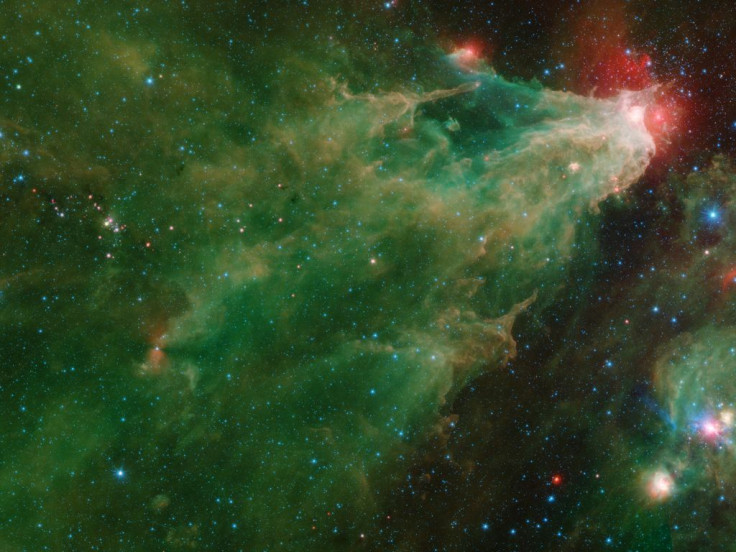NASA Spitzer Snaps Stunning Clusters Of Stars From Faraway Nebula

A new photo taken by NASA’s Spitzer Space Telescope shows what seems like a stunning family portrait of multi-generational stars and other cosmic bodies. The image was captured using Spitzer’s Infrared Array Camera and the Multiband Imaging Photometer.
Due to the vibrant colors showcased in the photo, the image looks more like a painting rather than a picture of space. According to NASA, majority of the radiant colors shown in the photo came from the varying wavelengths of infrared light produced by stars.
The prominent shades of green and orange in the photo are the cloud of dust and gas that came from a nebula. The glowing red region at the tip of the nebula is dust that has been heated by the radiation from stars. Surrounding the tip of the nebula is a star cluster.
The left side of the photo shows a dark streak running through the greenish cloud. Labeled as Cepheus C in NASA’s photo, this region is located in the Cepheus constellation.
Slightly below Cepheus C is a massive star known as V374 Ceph. Astronomers speculated that this star is surrounded by a dark and dusty material, which could explain the slight shadow surrounding it.
Near the bottom portion of the image is the Young Nebula. According to NASA, the formation of new stars in this region illuminates the green and orange cloud of dust and gas.
Directly above the Young Nebula is the Runaway Star, which is the bright blue star with a red arc over it. NASA explained that this star is causing a shockwave in its surroundings as it moves across the cloud.
The top right side of the photo shows Cepheus B. Unlike other parts of the photo, this region stands out due to the absence of the greenish cloud. NASA noted that the cloud has already dispersed in this region, which led to the formation of stars.
As explained by the space agency, the photo shows a rare glimpse into the formation of a family of stars. It shows the younger stars after forming from the dense clouds as well as the mature star clusters that stand unobstructed in space.

© Copyright IBTimes 2025. All rights reserved.





















